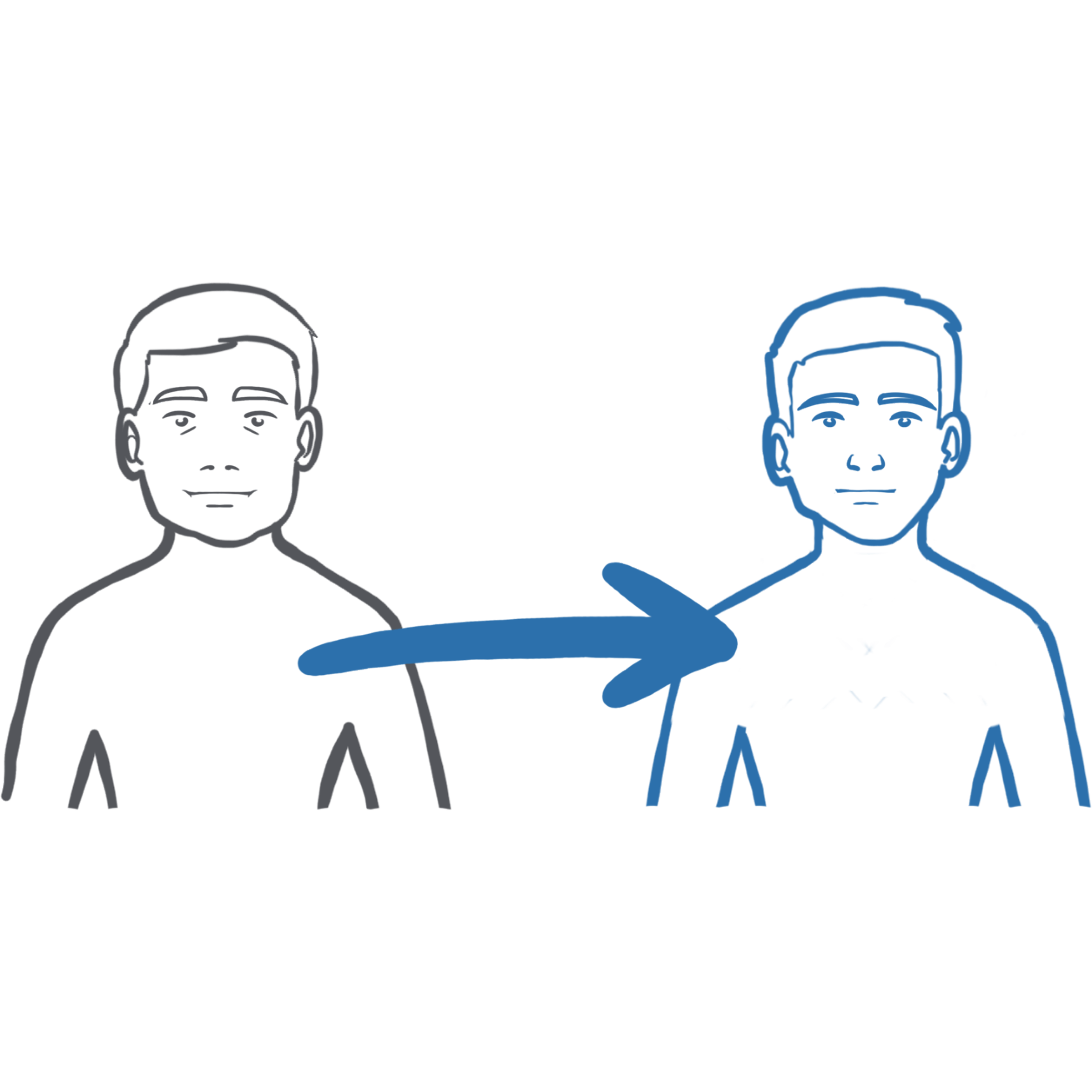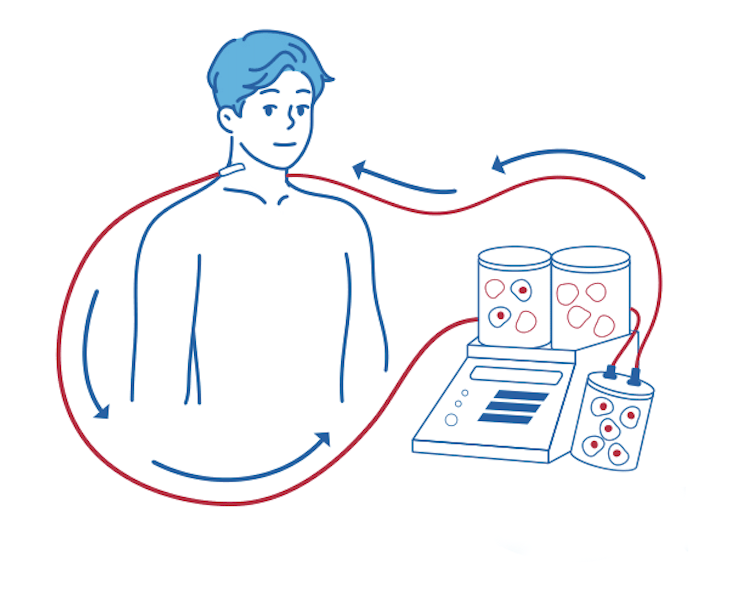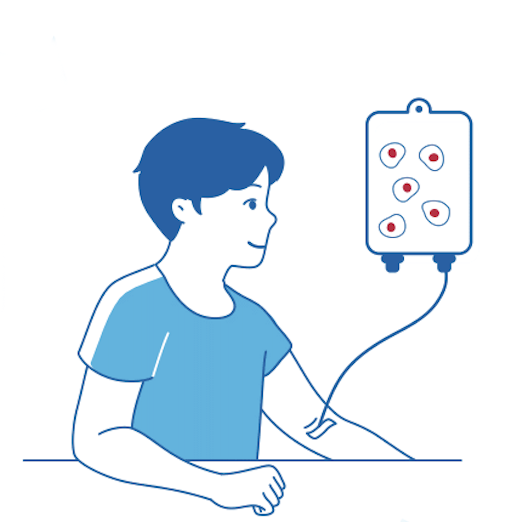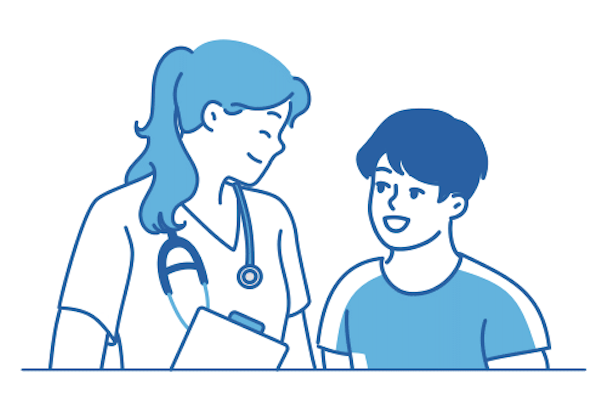

In an allogeneic stem cell transplant, healthy blood stem cells are donated by another person, either a matched stranger or a family member.1
In an allogeneic stem cell transplant, just like in an autologous stem cell transplant, cancer cells are first destroyed with high-dose chemotherapy and then your stem cells are replaced with those from the donor.1,2 The key difference between an autologous stem cell transplant and an allogenic stem cell transplant is that the donor and recipient are different individuals.1,2
For an allogenic transplant, a donor whose cells match the patient’s is required.2 If the patient has siblings, they may be a suitable match. If not, the search will be expanded to other relatives or the general public.3
Once the donor’s cells are infused, they help the bone marrow recover from the chemotherapy and begin rebuilding the patient’s immune system. This new immune system can also target any remaining lymphoma cells, an effect known as the graft-versus-tumour/lymphoma effect.1,2

Graft-versus-lymphoma effect
The graft-versus-lymphoma effect is a desired effect that occurs in an allogeneic stem cell transplant, where the donor’s immune system attacks the recipient’s cancer cells.1
Graft-versus-host disease
Graft-versus-host disease is an undesirable side effect that can occur during an allogeneic stem cell transplant. The donor’s foreign immune system attacks the recipient’s normal body cells. Graft-versus-host disease often causes mild to moderate symptoms, but occasionally, it can be severe and even life-threatening.1


In an allogeneic stem cell transplant, the stem cells come from a donor, either a family member or an unrelated individual. The donor cells must match the patient’s cells, particularly the human leukocyte antigen (sometimes just called HLA) system. Human leukocyte antigen is a specific protein found on the surface of most cells that helps your immune system recognise cells belonging to your body.3,4 The closer the match, the lower the risk of rejection and graft-versus-host disease.3,4

Stem cells are collected from a —either related or unrelated—who has suitable tissue characteristics.3,4 The donor will receive injections some medication for several days before the donation to stimulate the accumulation of stem cells in the bloodstream.5
In a process called apheresis, blood is drawn from the donor and the stem cells are filtered out. The remaining blood is then returned to the donor via an infusion.5
Alternatively, stem cells can be harvested directly from the bone marrow through surgery and then transplanted in the same way as blood stem cells.5

Before transplant, you will be admitted to hospital to receive chemotherapy, possibly in combination with radiotherapy. This treatment is used to suppress your immune system and reduce blood-cell production to prevent transplant rejection and, ideally, to eliminate any remaining cancer cells. Additionally, conditioning creates space for the new donor stem cells.4
You will also need to take immunosuppressive medications to help prevent the donor’s stem cells and your immune system from attacking each other.1

After conditioning, the patient receives the donor’s stem cells through an infusion.4
The goal is for these stem cells to develop into a healthy blood system with functioning immune cells.1,4
In addition, the newly formed immune system can help attacks remaining cancer cells that may have survived chemotherapy (graft-versus-lymphoma effect).1

Due to the side effects and long-term consequences of an allogeneic stem cell transplant, comprehensive long-term follow-up care is required. Close cooperation with the treating physicians is therefore very important.1

Possible side effects of an allogeneic stem cell transplant include:1
A common side effect of an allogeneic stem cell transplant is graft-versus-host disease in which the donor immune system attacks the body’s own normal cells.1 There are two types of graft-versus-host disease:1
This is only a selection of the most-important/most-common side effects. It is not exhaustive and other side effects may also occur.
Due to the side effects and long-term consequences of an allogeneic stem cell transplant, comprehensive long-term follow-up care is required with the healthcare team.1
References: